LA Weekly | Aug 12, 2024
Owning and managing rental properties can be a great way to generate passive income, but it also comes with responsibilities. As a landlord, keeping your properties well-maintained through preventative measures and addressing emergencies promptly is key to protecting your investment, keeping tenants happy, and avoiding legal issues.
Getting the balance right between preventative maintenance and handling emergency repairs is an essential rental property management skill for any landlord to develop.
The Benefits of Preventative Maintenance
When it comes to rental property maintenance, the old saying “an ounce of prevention is worth a pound of cure” really rings true. Staying on top of preventative maintenance helps avoid more costly emergency repairs down the road and other headaches for landlords.
Preventative maintenance refers to regularly scheduled inspections, testing, adjustments, parts replacements, and cleaning that help to keep your property in good working order and identify minor issues before they become huge problems. Think about changing AC filters quarterly, testing smoke detectors bi-annually, checking for leaks under sinks, inspecting the roof after heavy storms, and so on.
Consistency is key when it comes to preventative rental property maintenance. Some specific benefits include fewer emergency repairs, improved safety, enhanced curb appeal, increased tenant satisfaction and retention, and asset life maximization. This optimizes your return. Preventative maintenance might take a little extra time upfront as a landlord, but the time and cost savings down the road make it well worth it.
Common Preventative Maintenance Tasks
Preventative rental property maintenance plans will differ somewhat depending on the type of property, such as a single family home versus an apartment building. Certain elements like cleaning gutters or testing a fire sprinkler system only apply to one versus the other. However, many typical preventative maintenance tasks are common across most types of rental housing units.
Here is an overview of some of the most common preventative maintenance tasks landlords should account for:
Monthly tasks include replacing air filters, testing smoke detectors, inspecting fire extinguishers, checking for leaks under sinks, monitoring landscaping, and conducting routine cleaning.
Quarterly tasks involve inspecting railings and porches, doing roof inspections, power washing exterior surfaces, servicing heating and cooling systems, and treating for bugs and pests.
Biannual tasks consist of cleaning gutters and downspouts, inspecting crawl spaces for moisture, checking water heaters, and replacing batteries in all units.
Annual tasks incorporate tuning up HVAC systems, inspecting chimneys, examining water supply lines, professionally cleaning carpets, and repainting the interior and exterior.
Creating a preventative maintenance calendar that spells out a monthly, quarterly, biannual and annual checklist tailored to your specific property is hugely helpful for staying consistent. Digital property management software also makes it easy to schedule and track maintenance.
Preparing for Emergency Repairs
Of course, even the most diligent landlords will inevitably have to deal with emergency repairs. No matter how consistent you are with preventative maintenance, things will break, accidents will happen, and you’ll occasionally get middle of the night calls from tenants about urgent issues. The key is being prepared for emergencies when they arise.
There are a few important things landlords can do get set up for handling emergencies:
Create an Emergency Contact List: Put together a list of your preferred service providers for emergency repairs like preferred plumbers, electricians, HVAC repair technicians, locksmiths, and general contractors. Include multiple 24/7 contacts for each key type of repair so you have redundancies. Saving this emergency contact list on your phone makes it easy to access urgencies pop up.
Establish Emergency Protocols: Draft protocols that spell out how to handle emergencies and document the process for reference. Cover things like who to notify, entering a unit if a tenant can’t be reached, when to call emergency services, etc. Conveyed protocols minimize confusion during stressful events.
Set Aside an Emergency Fund: As a landlord, set up a rental property emergency fund or line of credit to finance unanticipated repairs. This ensures you can move quickly when required and that tenants aren’t left waiting. Most experts recommended having at least 6 months of projected operating expenses set aside.
Backup Key Access: Make sure you have access to unit keys in case tenants are out and you need quick entry to address an emergency maintenance issue. Store backup keys with a trusted neighbor, property manager, or in a key lock box on site. Communicate emergency access protocols with tenants.
As Kent Clothier Sr., CEO of REI Nation, the leading turnkey property investment and management company said, “Effective property management is just as vital as choosing the right market when it comes to generating sustainable returns in rental real estate. Preventative maintenance saves investors money over the long haul by heading off costly repairs down the line. It’s equally key to have emergency protocols and reliable contractors in place to address urgent issues quickly. We educate our clients on crafting comprehensive maintenance plans tailored to each property, tracking details meticulously, and partnering with experienced managers for smooth sailing.”
Examples of Common Emergency Repairs
While preventative maintenance aims to avoid emergencies, issues large and small are part of owning rental properties. Some examples of common emergencies landlords might encounter include burst pipes leading to flooding, major appliance failures, electrical issues, gas leaks, broken door locks, backed up plumbing, sewage issues, and structural damage from natural disasters or fires. Many emergencies can cause massive additional property damage if not remedied quickly, which is why an urgent response is critical.
Preventative vs Emergency Repairs: How to Decide
For questionable maintenance issues, landlords can ask key questions to evaluate if it qualifies for emergency status:
Is the issue currently making the unit unsafe or uninhabitable?
If yes, likely an emergency.
Does it have the potential to cause additional higher repair costs if not addressed very quickly?
If yes, likely an emergency.
Could the issue reasonably wait until normal business hours or scheduled maintenance?
If yes, it’s likely preventative.
As the landlord, do I have the skills and equipment to address this myself?
If no, it’s likely an emergency.
Have multiple DIY fix attempts failed?
If yes, it may now qualify as an emergency.
When in doubt, it’s better to err on the side of caution and treat a questionable issue urgently rather than have it spiral into a bigger problem. Trust your instinct on urgency, and bring in a professional right away if needed.
“Navigating the line between preventative and emergency repairs is more art than science for landlords new to the game. We coach our investors to consider severity and safety issues first, trust their instincts on urgency, and never hesitate to bring in a professional,” Clothier said. “My years of experience managing thousands of properties through various housing cycles gives me an eye for spotting red flags early. This helps our clients avoid headaches and ensures their tenants always have a comfortable, well-maintained place to call home.”
Maintenance Record Keeping Best Practices
Beyond maintenance and repairs, documentation is key. Keeping thorough, organized rental property maintenance records accomplishes a few important things:
It helps reference what repairs and replacements have been completed over time so you know what may be due for an update. Detailed records come in handy for tax purposes to substantiate operating expenses and deductions. Meticulous maintenance logs serve as evidence necessary repairs were made timely in case tenant complaints arise.
Ideally landlords should track all preventative maintenance, tenant requests, emergency repairs, regular inspections, operating expenses and upgrade projects. This helps identify patterns and areas that require focus. There are various property management record keeping templates and systems available to streamline documentation. Consult your accountant to ensure you capture all needed financial details.
Key Takeaways
Managing preventative maintenance, responding to emergency repairs promptly, and documenting everything thoroughly form a simple yet robust rental property maintenance plan for landlords. It’s also important to periodically check for gaps and room for improvement. Partnering with experienced property managers and contractors makes the process much smoother as well.
Putting systems in place to stay proactive with maintenance takes effort upfront, but ultimately saves major time, money and headaches in rental property ownership. Following basic Rental Property Maintenance 101 principles gives landlords essential peace of mind that they are caring for their assets while keeping tenant living standards high. Implementing strong preventative protocols makes for smooth sailing when emergencies strike too.
LA Weekly | Aug 12, 2024








